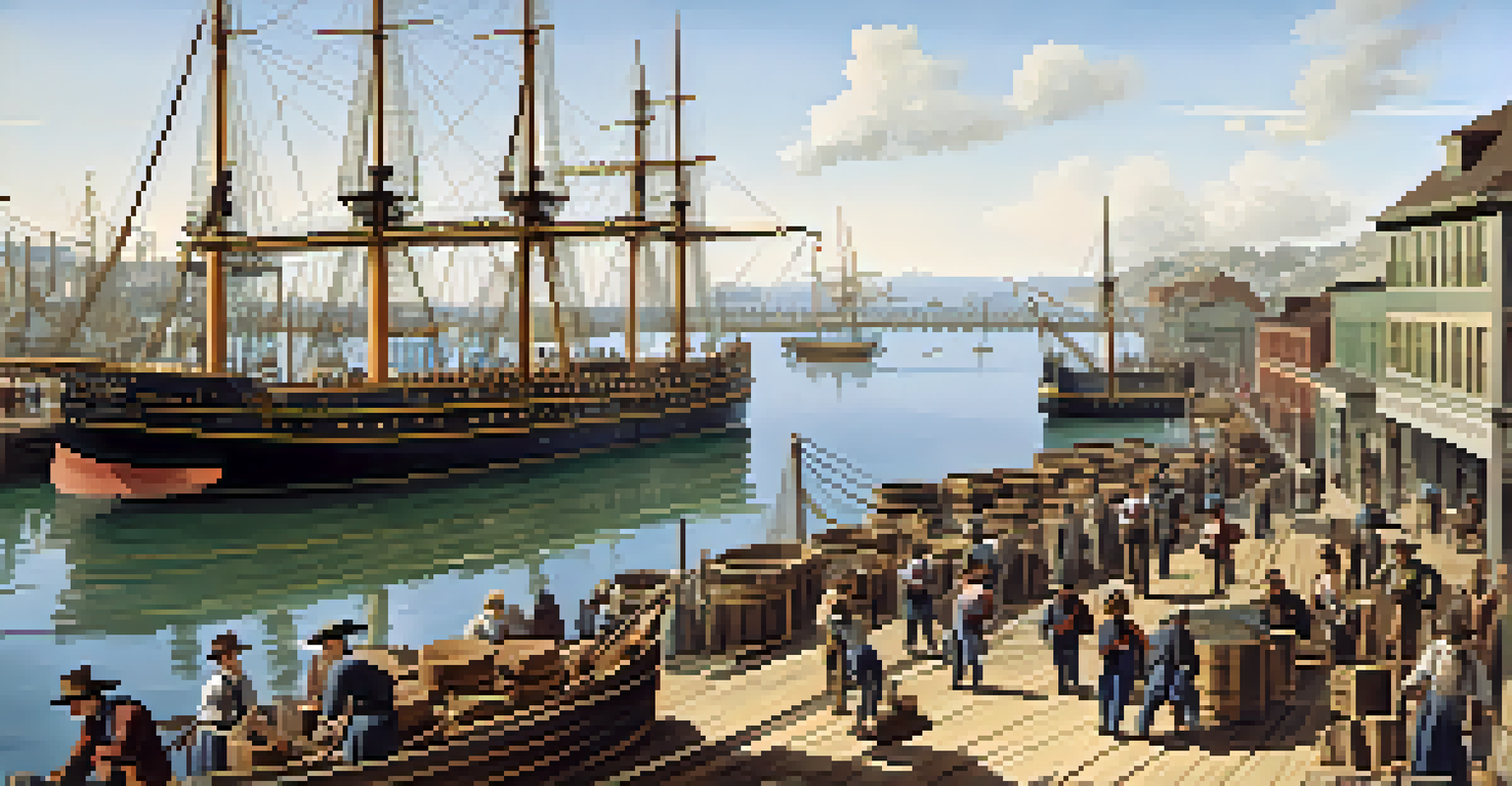The Founding of Redwood City: A Historical Overview

The Early Inhabitants of Redwood City
Before the arrival of European settlers, the area now known as Redwood City was inhabited by the Ohlone people. These indigenous people thrived on the rich resources of the Bay Area, utilizing the land for fishing, hunting, and gathering.
The past is never dead. It's not even past.
The natural beauty of the region, with its lush redwood forests and abundant wildlife, provided a perfect environment for their way of life. The Ohlone established a deep connection with the land, which played a significant role in their culture and traditions.
As the 18th century approached, however, changes were on the horizon with the arrival of Spanish explorers, setting the stage for the transformation of the region.
Spanish Exploration and Land Grants
In the late 1700s, Spanish explorers made their way to California, marking the beginning of European influence in the area. The Spanish established missions, leading to land grants that fundamentally reshaped the landscape and ownership of the region.

These land grants were pivotal, as they encouraged the development of ranchos and agricultural practices. The introduction of cattle and farming changed the economic landscape, paving the way for future settlers seeking opportunity.
Ohlone Heritage and Early Life
Before European settlement, the Ohlone people thrived in the Redwood City area, deeply connected to the land's rich resources.
By the mid-1800s, the land was ripe for further development, setting the stage for the founding of Redwood City.
The Birth of Redwood City in 1851
Redwood City was officially founded in 1851, primarily due to its strategic location and access to the bay. Early settlers recognized the potential for trade and transportation, leading to the establishment of a bustling port.
History is not a burden on the memory but an illumination of the soul.
The city quickly became known for its lumber industry, capitalizing on the surrounding redwood forests. This booming industry attracted workers, merchants, and families, contributing to the growth and character of the emerging community.
As Redwood City developed, it became a vital hub for the surrounding agricultural regions, enhancing its importance in the area.
Incorporation and City Development
In 1867, Redwood City officially incorporated, marking a significant milestone in its journey. This incorporation allowed for more structured governance and paved the way for community development initiatives.
With a growing population and flourishing economy, the city began to invest in infrastructure, including roads, schools, and public services. These developments not only improved living conditions but also attracted new residents eager to be part of the thriving community.
Redwood City Founded in 1851
The strategic location and access to the bay led to the founding of Redwood City in 1851, establishing it as a vital port and lumber hub.
The establishment of the railroad in the late 1800s further transformed Redwood City, solidifying its position as a transportation nexus.
Redwood City: A Hub for Agriculture
While the lumber industry was crucial in Redwood City's early days, agriculture soon became a significant part of its identity. The fertile land surrounding the city allowed for the cultivation of various crops, including fruits and vegetables.
Farmers and merchants collaborated, creating a vibrant economy that supported local families and businesses. Farmers' markets and agricultural fairs became community staples, reflecting the city's agricultural heritage.
This focus on agriculture not only provided sustenance but also fostered a sense of community among residents, who came together to celebrate their local bounty.
The Impact of the 20th Century
As the 20th century approached, Redwood City experienced significant changes due to technological advancements and urbanization. The rise of the automotive industry led to increased mobility, allowing residents to commute and explore beyond the city limits.
This shift brought new businesses and industries to Redwood City, diversifying its economy and changing its demographics. The population grew rapidly, leading to a need for more housing, schools, and public services.
Modern Growth and Innovation
Today, Redwood City balances its historical roots with modern advancements, becoming a center for technology and economic development.
With this growth came the challenge of maintaining the city's character and sense of community amidst rapid development.
Modern Redwood City: Balancing Tradition and Progress
Today, Redwood City stands as a vibrant city that beautifully balances its historical roots with modern advancements. Efforts to preserve historical landmarks and promote local culture reflect the community's appreciation for its past.
At the same time, Redwood City has embraced innovation, becoming a center for technology and business development. The local economy thrives with a mix of established companies and startups, creating a dynamic environment for residents and entrepreneurs alike.

As Redwood City continues to grow, it remains committed to honoring its rich history while embracing the future with open arms.